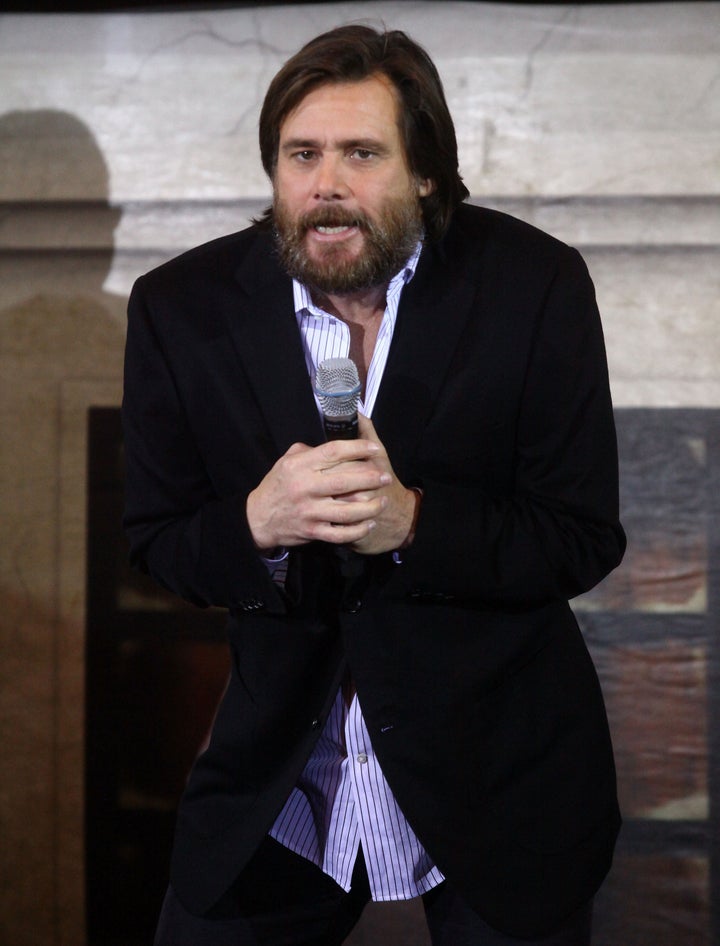
If you've seen any of the ads (including posters/print) for Disney's A Christmas Carol (3D), you (and kids) would think that the film is a funny, slapsticky, action-filled Jim Carrey romp that makes dazzling use of the advances in performance-capture 3D/CG technology. And you would be wrong. Very, very wrong. Thanks to Disney's deceptive ad campaign, A Christmas Carol is going to be a surprise to most viewers. And not a happy one.
Despite the marketing, A Christmas Carol is actually very dark (in look and tone), menacingly scary at times, and almost never funny. And most amazingly, the film left me wondering why it had been made using 3D/CG in the first place, which is supposedly the film's main selling point.
Can you see why this movie might have problems?
Watch the deceptive trailer here
Instead of a re-imagining of the classic tale, A Christmas Carol plays out mostly like, well, a play that sticks closely to Charles Dickens' original novella. That's not necessarily a bad thing, but probably not what most kids are looking for. The film does open with a new scene of Ebenezer Scrooge at the mortuary plucking two coins from the dead eyes of his business partner, Jacob Marley. It's a good example of the film's un-Disneylike brand of "fun" that's likely to upset young children, especially if they've been unlucky enough to have attended a grandparent's open-casket funeral.
It's interesting that there was such a discussion about whether Where the Wild Things Are -- a film I loved that is aimed at both kids and adults -- was too scary for kids, while I found parts of A Christmas Carol -- which is being marketed exclusively to kids with Disney's promotional muscle -- to be much scarier and more upsetting than anything in WTWTA. The scenes with Marley's ghost (at one point his jaw grotesquely cracks apart), the children of Ignorance and Want who accompany the Ghost of Christmas Present, and the reaper-like Ghost of Christmas Future are particularly frightening. I think the filmmakers felt The Nightmare Before Christmas proved that kids want dark, scary Christmas stories, which totally ignores Nightmare's coup of making the macabre so adorable, funny, not at all scary, and eventually finding an audience amongst teenagers and adults.
Speaking of darkness, Carol's ability to portray dark, candle-lit interiors and the cold winter gloom of old England is perhaps the main/sole advantage of the film being made with computer animation. Other than that, I really couldn't figure out why this movie was made using CG at all, especially when so many films (not to mention a good portion of what's on BBC) have successfully recreated that era using a mix of real locations, sets, and selective CG for wider shots. And most modern sci-fi or action movies have shown that actors can be realistically placed in unreal environments.
The performance-capture technology used to digitally record the movements and expressions of actors, then transpose them onto CG characters has come a long way from Carol director Robert Zemeckis' previous much-derided CG efforts, the Polar Express and Beowulf, which were both criticized for their characters' dead eyes and languid faces. The face of Jim Carrey as Scrooge is impressively expressive and real-looking most of the time, yet it still fails to capture the countless tiny movements and details we expect from an actual human face. Unfortunately, the attention spent on Scrooge's face clearly wasn't extended to Carol's other characters, which again left me wondering why the film wasn't made using real actors. What's the point of having Bob Cratchit look like Gary Oldman, be voiced by Gary Oldman, but act like someone wearing a Gary Oldman mask? The same goes for Colin Firth as Scrooge's nephew, Fred. It seems like the main reasons for making the film in CG was to keep Carrey out of the makeup chair and allow him to play multiple characters, neither of which are worth sacrificing convincing performances. Zemeckis should really hang up the performance-capture suits after this one.
The use of 3D in Carol was largely consistent with my impressions of 3D in other movies -- it was by turns distracting, inconsequential, or used to justify pointless, tacked-on scenes to remind you why you shelled out the extra money. Coincidentally, most of the scenes used in Carol's marketing are from this last group, like when Scrooge zooms across England with the Ghost of Christmas Past, rockets into the sky on a giant candle snuffer, or snowboards on an icicle. Let's just say those scenes don't redeem the film.
While A Christmas Carol will probably do well in its first weekend, Disney's real Nightmare Before Christmas may be if the $175 million Carol gets pulled from theaters before Dec. 24 due to poor word of mouth. Then again, the Polar Express, which was awful, made $300 million, so you never know.
If you'd like to give kids a look at A Christmas Carol, I'd save your money and gather the tykes around the computer to watch Disney's wonderful Mickey's Christmas Carol (part 1, part 2, part 3), which also airs on TV every year. While this version is obviously Disneyfied, it retains the darker elements of the original story without being scary and arguably addresses the core messages of the story better than the 3D version.
Or you can always read Dickens' original novella, which can be found online for free. With the economy in the crapper, it's a good year to let some of our inner Scrooge shine through.
For more ReThink Reviews, visit ReThinkReviews.net.